Issue – Air in Power Steering System
After replacing a steering pump, flushing the steering system, or performing another service, it is possible to get air in a hydraulic power steering system. Removing the air is important to ensure that the system’s pressure and performance don’t suffer. Failure to remove the air causes a constant whining noise and can shorten the lifespan of the power steering pump. In some vehicles, removing the air is a simple process with no special technology required, while with other systems, you may have to do some additional measures to get rid of the air.
Procedure
In a few easy steps, you can remove the air from a hydraulic power steering system.
Step 1 – Check Power Steering Fluid Level
Verify that the power steering fluid is filled to manufacturer specification. If the power steering fluid is low before you start the process, you should top it off to the correct level using the proper power steering fluid. Some systems use power steering fluid while some require automatic transmission fluid. Check the owner’s manual or manufacturer specifications to ensure you’re using the right fluid for the application.
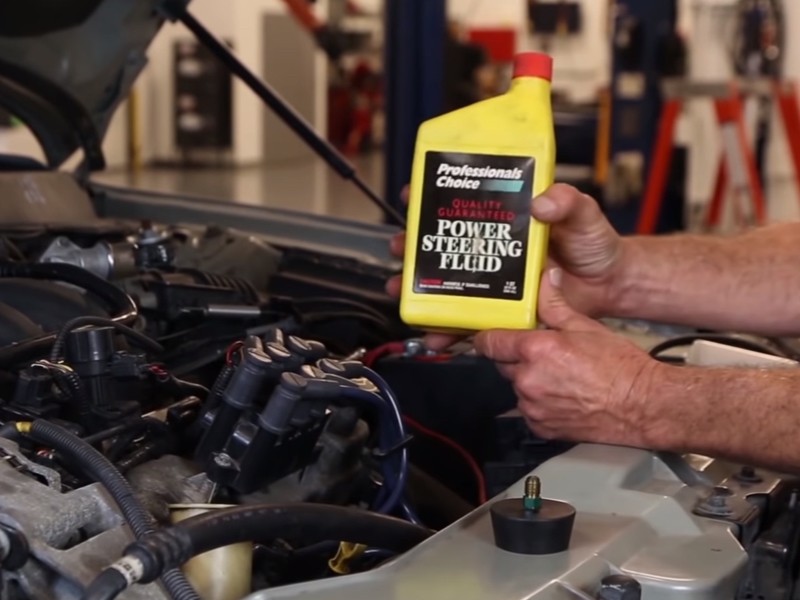
Step 2 – Install Vacuum Adapter
Available from many auto tool supply stores, install a vacuum adapter in the fill cap of the power steering reservoir. Attach a vacuum pump to the adapter to help draw the air from the fluid. For drawing the air out, you can use a hand vacuum pump or an air conditioning vacuum pump. No matter which tool you use, it’s recommended to use a liquid vapor separator to catch any power steering fluid that may get pulled out along with the air.
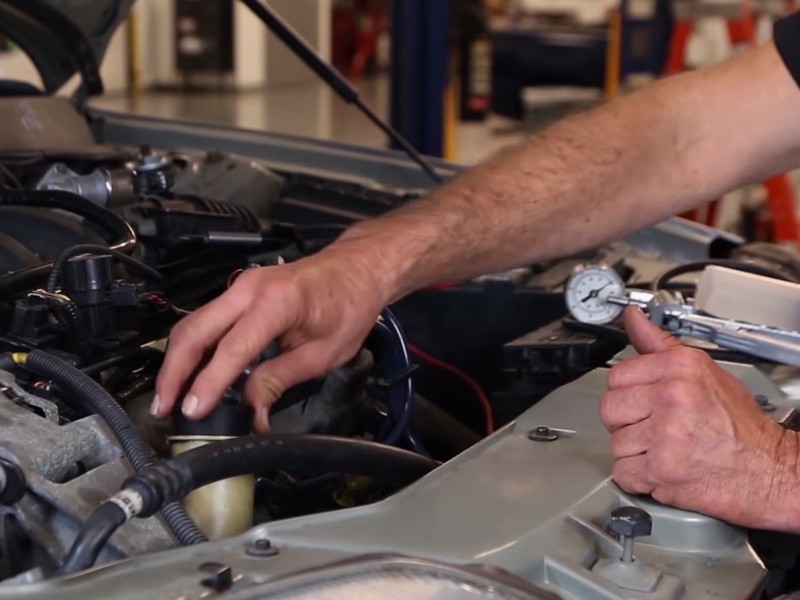
Step 3 – Perform the Air Bleed Process
Begin by starting the engine and letting it idle. Draw 20-25 inches of vacuum on the pump. As you draw the vacuum, you’ll hear the pump start to make noise as you’re pulling the air from the fluid. While the vacuum stays applied, turn the steering wheel from stop-to-stop 10 times.
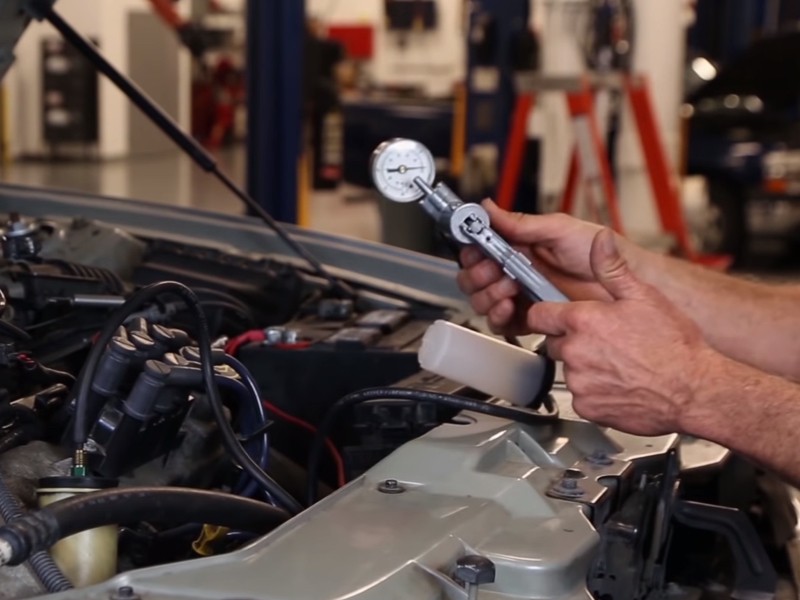
Step 4 – Recheck the Power Steering Fluid Level
Once you’ve cycled the steering wheel, turn the engine off. Release the vacuum and open up the reservoir to check the power steering fluid level. During the process of pulling a vacuum, it is possible to pull some fluid from the reservoir so you want to make sure the fluid is still filled to spec. If the fluid level is low, add more fluid.
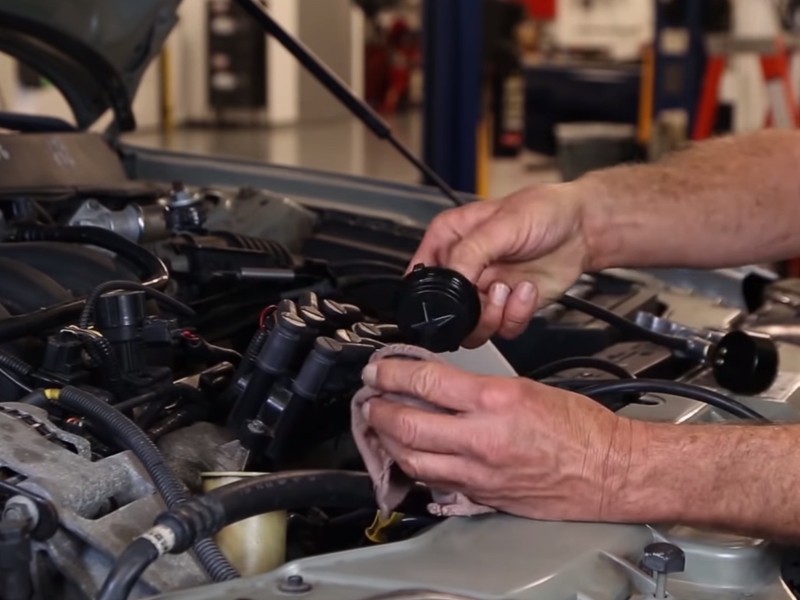
Step 5 – Perform Air Bleed Process Again
Install the vacuum adapter again and start the engine. Apply 20-25 inches of pressure once more. With the vacuum applied, again turn the steering wheel from stop-to-stop 10 times. After cycling the steering wheel, turn the engine off and release the vacuum.
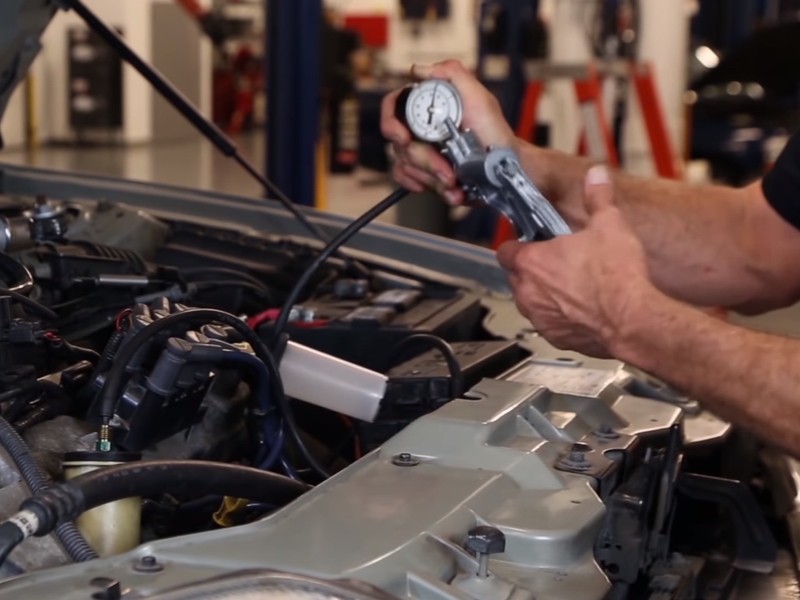
Step 6 – Final Check
Check the fluid once more to make sure that it didn’t draw too much out along with the air. Once you’ve verified the fluid level, check the system for leaks. Ensure that everything is in order before returning the vehicle to the customer.
Browse our onsite and online automotive training courses that can advance your career.
The content contained in this article is for informational purposes only and should not be used in lieu of seeking professional advice from a certified technician or mechanic. We encourage you to consult with a certified technician or mechanic if you have specific questions or concerns relating to any of the topics covered herein. Under no circumstances will we be liable for any loss or damage caused by your reliance on any content.


 English
English